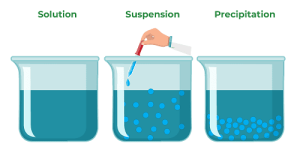Product-
Products can be categorized in various ways based on different criteria. Here are some common types of product classifications:
- Consumer Products: These are products purchased by individuals for personal use. They can be further classified into:
- Convenience Products: Items consumers buy frequently, immediately, and with minimal comparison and effort (e.g., snacks, toiletries).
- Shopping Products: Items consumers compare based on suitability, quality, price, and style before making a purchase (e.g., clothing, furniture).
- Specialty Products: Products with unique characteristics or brand identification for which a significant group of buyers is willing to make a special purchasing effort (e.g., luxury cars, designer clothes).
- Industrial Products: These are products bought by businesses for further processing or for use in conducting a business. They include:
- Materials and Parts: Raw materials and component parts used in manufacturing processes.
- Capital Items: Long-lasting goods that facilitate developing or managing the finished product (e.g., buildings, machinery).
- Supplies and Services: Consumable goods or services used in the normal operation of a business (e.g., office supplies, maintenance services).
- Augmented Products: These include additional features and services that accompany a core product to add value or differentiate it from competitors (e.g., warranties, installation services).
- Durable and Non-durable Products: Durable products are those that have a long lifespan and are not consumed all at once (e.g., appliances, furniture), whereas non-durable products are consumed or have a short lifespan (e.g., food, toiletries).
- Tangible and Intangible Products: Tangible products are physical goods that can be touched and seen (e.g., electronics, clothing), while intangible products are services or experiences (e.g., insurance, education).
- Global vs. Local Products: Some products are designed for global markets and have universal appeal (e.g., smartphones), while others are tailored to local preferences or needs (e.g., regional food specialties).
These categories help businesses understand their products’ characteristics and market them effectively to target customers.
What is Required Product
A “required product” typically refers to a product that fulfills a specific need or requirement. It suggests that the product is necessary or essential for a particular purpose or task. The term “required” implies that without this product, there would be a deficiency or inability to achieve a desired outcome or function.
Here are a few examples to illustrate what a required product might entail:
- Safety Equipment: Products like helmets, gloves, or safety harnesses are required in certain industries or activities to ensure worker safety.
- Medical Supplies: Essential medical products such as bandages, medications, or surgical instruments are required for healthcare professionals to treat patients effectively.
- Educational Materials: Textbooks, notebooks, and educational software are required products for students to learn and complete their studies.
- Household Essentials: Products like food staples, cleaning supplies, and toiletries are required for daily living and maintaining a household.
- Professional Tools: Specialized tools and equipment required by professionals in various fields, such as construction tools for builders or software for programmers.
The concept of a required product emphasizes its necessity or indispensability in fulfilling a specific function or meeting a particular need. Businesses often target these products because they cater to essential consumer or industry requirements, ensuring consistent demand and utility.
Who is Required Product
The term “product” typically refers to a tangible or intangible item that is manufactured or produced to be sold or used by customers. In a general sense, a product can be:
- Tangible Product: Physical goods that can be touched, seen, and consumed, such as electronics, clothing, or food items.
- Intangible Product: Services or experiences that are provided to customers, such as healthcare services, education, or entertainment.
In business and marketing contexts, a product is a key element that companies develop, market, and sell to satisfy the needs and wants of consumers. It can range from simple everyday items to complex technological innovations. Products can also be categorized based on their nature (consumer products vs. industrial products), durability (durable vs. non-durable), and purpose (convenience products, specialty products, etc.).
When asking “who is product,” it’s important to understand that “product” is not a person but rather a concept that represents goods or services offered in the marketplace.
When is Required Product
The phrase “required product” typically refers to a product that is needed or necessary under specific circumstances or conditions. The timing of when a required product is needed depends on various factors:
- Demand: The need for a required product arises when there is a demand for it among consumers or businesses. This demand could be influenced by seasonal trends, market conditions, or changes in consumer preferences.
- Use Case: Some products are required for specific use cases or situations. For example, winter clothing is required during cold seasons, while sunscreen is required during sunny days.
- Emergencies: Certain products become required during emergencies or crises. For instance, medical supplies are required during healthcare emergencies, and emergency kits are required during natural disasters.
- Regulations and Standards: In some cases, products are required to comply with regulations or standards set by authorities. This could include safety equipment in workplaces or certifications for certain industries.
- Life Cycle: Products may also be required at different stages of their life cycle. For instance, maintenance products are required periodically to upkeep durable goods like vehicles or appliances.
Understanding when a required product is needed involves considering these factors and recognizing the conditions under which the product fulfills its intended purpose or necessity.
Where is Required Product

The location or place where a required product is found or needed depends on the context and purpose of the product. Here are some common scenarios where the question “where is required product” might apply:
- Retail Stores: Many required products are available for purchase in retail stores such as supermarkets, convenience stores, specialty shops, and department stores. These locations cater to consumer needs for everyday items like groceries, household supplies, clothing, and electronics.
- Online Platforms: In the digital age, an increasing number of required products are accessible through online platforms and e-commerce websites. Consumers can browse and purchase a wide range of products from the comfort of their homes, including both tangible goods and digital services.
- Specialty Stores: Certain products are available only in specialty stores that cater to specific needs or interests. For example, medical supplies are found in pharmacies and medical equipment stores, while automotive parts are available in auto shops.
- Industrial Settings: Required products in industrial sectors, such as raw materials, machinery parts, and specialized tools, are typically sourced from industrial suppliers, manufacturers, or wholesalers that serve businesses and industrial operations.
- Emergency Situations: During emergencies or crises, required products such as emergency kits, medical supplies, and disaster relief items are distributed through emergency response organizations, hospitals, and relief centers.
- Regulated Environments: Products required for compliance with regulations or safety standards are often found in specific locations that adhere to these guidelines. For example, safety equipment in workplaces is available where occupational health and safety protocols are enforced.
Understanding where to find a required product involves considering its purpose, consumer demand, distribution channels, and any specific regulations or standards that apply to its availability and procurement.
How is Required Product
The phrase “how is required product” seems to ask about the characteristics or qualities of a product that make it necessary or essential in specific contexts. Here’s how a required product can be understood:
- Functionality: A required product typically fulfills a specific function or purpose. Its design and features are tailored to meet the needs or requirements of its intended users. For example, a required medical device must perform its intended medical function effectively.
- Utility: The utility of a required product refers to its usefulness or practical value. It should provide tangible benefits to the user, whether it’s improving efficiency, enhancing safety, or meeting regulatory standards.
- Quality: The quality of a required product is crucial as it impacts its reliability, durability, and overall performance. High-quality products are often preferred because they are more dependable and offer better long-term value.
- Availability: A required product must be readily available when needed. This includes considerations such as accessibility through distribution channels, inventory management, and supply chain logistics.
- Compliance: Some required products need to comply with regulatory standards or industry-specific requirements. This ensures they meet safety, health, environmental, or legal standards, depending on the product category.
- Accessibility: The ease of obtaining a required product is important. Whether it’s available in stores, online platforms, through suppliers, or specialized outlets, accessibility ensures that users can obtain it conveniently.
- Support: Products often come with necessary support services such as customer service, warranties, maintenance, or technical assistance. This support ensures that users can effectively use and maintain the product over its lifecycle.
Understanding how a required product meets these criteria helps in assessing its suitability and ensuring it meets expectations and demands in various contexts, whether for personal use, industrial applications, or emergency situations.
Case Study on Product
Apple iPhone
1. Introduction: The Apple iPhone, introduced in 2007, revolutionized the mobile phone industry by combining a phone, an iPod, and an internet communicator into a single device. It marked a significant shift towards touchscreen interfaces and intuitive user experience.
2. Development and Innovation:
- Concept and Design: The iPhone was developed under the leadership of Steve Jobs with a focus on simplicity, elegance, and functionality. Its design included a revolutionary capacitive touchscreen interface and a minimalist aesthetic.
- Technological Innovations: The iPhone introduced several technological advancements, such as multi-touch gestures, a mobile web browser (Safari), and the App Store, which allowed third-party developers to create and distribute applications.
3. Market Strategy:
- Positioning: Apple positioned the iPhone as a premium product, targeting tech-savvy consumers who valued innovation, design, and seamless integration with other Apple products.
- Marketing Campaigns: Apple employed effective marketing campaigns that highlighted the iPhone’s features, usability, and ecosystem. Key campaigns focused on simplicity (“This is iPhone”) and the diversity of available apps.
- Distribution: Initially, the iPhone was exclusive to AT&T in the United States, which created buzz and anticipation. Later, Apple expanded distribution globally, partnering with various carriers worldwide.
4. Market Impact:
- Industry Disruption: The iPhone disrupted the mobile phone industry, leading competitors to adopt touchscreen interfaces, app ecosystems, and enhanced user experiences.
- Economic Impact: The iPhone contributed significantly to Apple’s revenue and profitability. It became a flagship product, driving Apple’s growth and influencing its strategy across other product lines.
5. Challenges and Adaptations:
- Technical Challenges: Initial iPhone versions faced criticism for battery life, network connectivity, and limited third-party app support. Apple addressed these issues through software updates and hardware improvements.
- Competitive Pressure: Competitors responded with their own touchscreen smartphones, intensifying competition in the market. Apple continued to innovate with subsequent iPhone generations to maintain its leadership position.
6. Future Directions:
- Product Evolution: The iPhone has continued to evolve with each new generation, incorporating advanced technologies such as facial recognition (Face ID), augmented reality capabilities, and improved camera systems.
- Sustainability: Apple has focused on sustainability initiatives, including using recycled materials in iPhone production and reducing environmental impact across its product lifecycle.
Conclusion: The Apple iPhone exemplifies a successful product case study through its innovative design, strategic marketing, market disruption, and continuous evolution. It has set benchmarks in user experience, technological integration, and brand loyalty, making it a pivotal product in the history of consumer electronics.
This case study demonstrates how a product’s development, market strategy, and adaptation to challenges can shape its success and influence an entire industry.
White paper on Product
Title: Understanding Product Development and Market Strategy
Introduction:
- Brief overview of the importance of products in business and consumer contexts.
- Definition of a product and its components.
- Importance of effective product development and market strategy.
Section 1: Product Development
1.1 Conceptualization and Ideation
- Process of generating ideas for new products.
- Importance of market research and consumer insights.
- Examples of successful product concepts and their origins.
1.2 Design and Engineering
- Importance of design in product development.
- Engineering considerations and prototyping.
- Case studies of innovative design in products.
1.3 Testing and Iteration
- Methods for testing products before launch.
- Importance of feedback loops and iteration.
- Examples of products that underwent significant iterations.
Section 2: Market Strategy
2.1 Market Analysis and Segmentation
- Conducting market analysis to identify opportunities.
- Segmentation strategies based on demographics, psychographics, and behaviors.
- Examples of successful market segmentation in product launches.
2.2 Positioning and Differentiation
- Importance of positioning a product in the marketplace.
- Strategies for product differentiation.
- Case studies of products with strong market positioning.
2.3 Pricing and Distribution
- Pricing strategies and their impact on product adoption.
- Distribution channels and logistics considerations.
- Examples of effective pricing and distribution strategies.
2.4 Promotion and Marketing
- Integrated marketing communications (IMC) strategies.
- Digital marketing and social media tactics.
- Successful product launch campaigns.
Section 3: Product Lifecycle Management
3.1 Introduction to Product Lifecycle
- Stages of the product lifecycle: introduction, growth, maturity, decline.
- Strategies for managing products at each stage.
- Examples of products navigating different lifecycle stages.
3.2 Sustaining Innovation and Adaptation
- Importance of continuous innovation and adaptation.
- Strategies for sustaining product relevance.
- Case studies of products that successfully adapted over time.
Conclusion:
- Recap of key points discussed in the white paper.
- Importance of integrating product development with market strategy.
- Future trends and challenges in product development and market strategy.
Appendix:
- Additional resources for further reading on product development and market strategy.
- Glossary of key terms related to product management and marketing.
This outline provides a comprehensive structure for a white paper that explores the intricacies of product development, market strategy, and lifecycle management. Each section can be expanded with detailed research, case studies, and examples to provide valuable insights for businesses and professionals involved in product management and marketing.
Industrial Application of Product
Introduction:
- Overview of the importance of industrial products in manufacturing and industrial sectors.
- Definition of the specific product and its significance in industrial applications.
- Importance of effective utilization and integration of industrial products in operations.
Section 1: Product Overview
1.1 Product Description and Specifications
- Detailed description of the specific product and its technical specifications.
- Components, materials, and manufacturing processes involved in producing the product.
- Illustrative diagrams or images highlighting the product’s features.
1.2 Functional Capabilities and Applications
- Key functionalities and capabilities of the product in industrial settings.
- Applications across different industries and sectors.
- Case studies demonstrating real-world applications of the product.
Section 2: Industrial Benefits and Advantages
2.1 Efficiency and Productivity Improvements
- How the product enhances efficiency and productivity in industrial processes.
- Comparative analysis with alternative solutions or older technologies.
- Quantitative data or metrics showcasing improvements achieved.
2.2 Cost Savings and Operational Economics
- Economic benefits of using the product, such as cost savings in production or maintenance.
- Return on investment (ROI) analysis for adopting the product.
- Case studies or examples illustrating cost-effective outcomes.
Section 3: Implementation and Integration
3.1 Integration into Existing Systems
- Strategies and considerations for integrating the product into current industrial systems.
- Compatibility with other equipment or technologies.
- Challenges and solutions encountered during integration.
3.2 Maintenance and Support
- Maintenance requirements and schedules for the product.
- Support services provided by the manufacturer or supplier.
- Best practices for ensuring optimal performance and longevity.
Section 4: Industry Case Studies
4.1 Case Study 1: [Industry Sector]
- Detailed case study of the product’s implementation in a specific industry sector.
- Challenges faced, solutions implemented, and outcomes achieved.
- Lessons learned and recommendations for similar implementations.
4.2 Case Study 2: [Industry Sector]
- Another case study highlighting different applications or benefits in a distinct industry sector.
- Comparison with traditional methods or competitors’ products.
- Strategic insights gained from the case study.
Conclusion:
- Recap of key benefits, advantages, and applications of the specific product in industrial settings.
- Future trends and potential developments in industrial applications.
- Recommendations for optimizing the use of the product and maximizing its industrial impact.
Appendix:
- Technical specifications and additional resources about the specific product.
- Glossary of terms related to industrial applications and product utilization.
This outline provides a structured approach to exploring the industrial application of a specific product, highlighting its technical aspects, benefits, real-world implementations, and strategic insights. Each section can be expanded with detailed research, data, and case studies to provide a comprehensive white paper tailored to industrial professionals and stakeholders.





